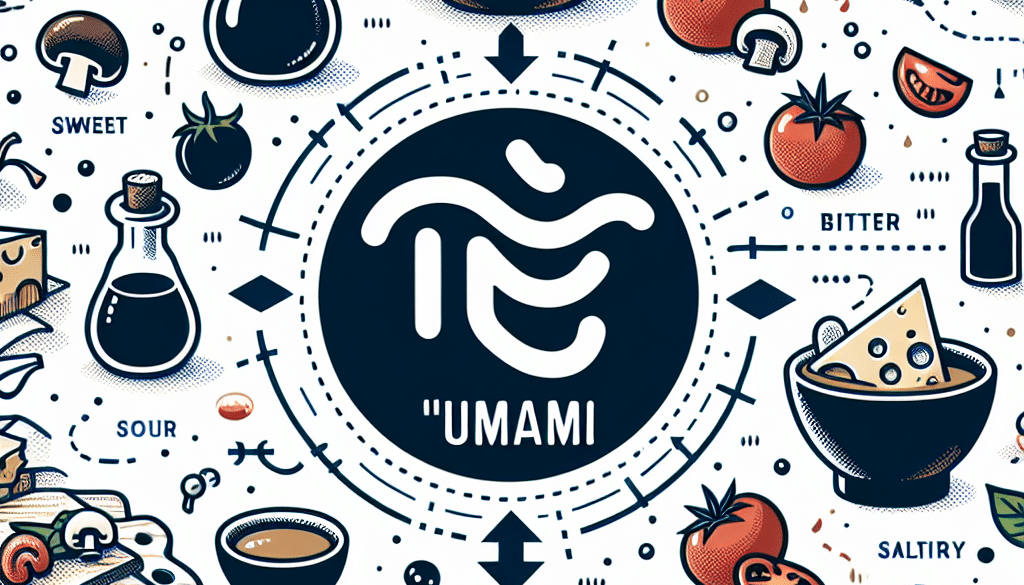What is umami flavour and how to use it in food?
-
Table of Contents
- Unlocking the Secrets of Umami Flavor: Enhancing Your Culinary Creations
- Understanding Umami: The Fifth Basic Taste
- The Science Behind Umami
- Foods Rich in Umami
- Integrating Umami into Your Cooking
- Combining Umami-Rich Ingredients
- Using Umami as a Flavor Enhancer
- Creating Balance with Umami
- Umami in Different Cuisines
- Japanese Cuisine
- Italian Cuisine
- Other Global Cuisines
- Case Studies: Umami in Action
- Umami and Health Considerations
- Conclusion: The Art of Umami in Culinary Practice
- Discover ETprotein’s High-Quality Protein Products
Unlocking the Secrets of Umami Flavor: Enhancing Your Culinary Creations

Umami, a term that has captivated the culinary world, often leaves many wondering about its essence and how it can transform the flavor profiles of various dishes. This article delves into the depths of umami, exploring its origins, characteristics, and the myriad ways it can be harnessed to elevate the gastronomic experience.
Understanding Umami: The Fifth Basic Taste
Umami is recognized as the fifth basic taste, alongside sweet, sour, bitter, and salty. It was discovered over a century ago by Japanese scientist Dr. Kikunae Ikeda, who identified the taste in kombu seaweed broth. The term “umami” is derived from Japanese, meaning “pleasant savory taste.” This flavor is attributed to the presence of glutamates, a type of amino acid, and ribonucleotides, which occur naturally in various foods.
The Science Behind Umami
At the molecular level, umami is primarily conveyed by glutamate and its salts (such as monosodium glutamate, or MSG), as well as nucleotides like inosinate and guanylate. These compounds interact with specific receptors on the human tongue, signaling the brain to recognize the savory, brothy, and complex depth that umami imparts.
Foods Rich in Umami
- Aged cheeses (Parmesan, Gouda)
- Fermented products (soy sauce, miso, sauerkraut)
- Seafood (anchovies, tuna, seaweed)
- Meats (beef, chicken, pork)
- Mushrooms (shiitake, portobello)
- Vegetables (tomatoes, sweet potatoes, corn)
Integrating Umami into Your Cooking
Understanding how to incorporate umami into your cooking can transform a good dish into a great one. Here are some tips and techniques to harness the power of umami in your kitchen.
Combining Umami-Rich Ingredients
Layering umami-rich ingredients can create a more complex and satisfying flavor profile. For example, combining mushrooms with Parmesan cheese or adding a splash of soy sauce to a beef stew can amplify the umami effect.
Using Umami as a Flavor Enhancer
Umami can also be used to enhance other flavors in a dish. A small amount of tomato paste in a soup can intensify the overall taste without overpowering the other ingredients.
Creating Balance with Umami
Umami has the unique ability to balance flavors, reducing the need for salt or sugar in recipes. This can be particularly beneficial for those looking to reduce sodium or caloric intake without sacrificing taste.
Umami in Different Cuisines
Umami is a universal taste that transcends cultural boundaries. Let’s explore how various cuisines incorporate umami into their traditional dishes.
Japanese Cuisine
Japanese cuisine is renowned for its use of umami, with ingredients like miso, soy sauce, and dashi (a broth made from kombu and bonito flakes) serving as staples in many dishes.
Italian Cuisine
Italian cooking often features umami through aged cheeses, sun-dried tomatoes, and cured meats, which are integral to the rich flavors of the Mediterranean.
Other Global Cuisines
From the use of fish sauce in Thai cooking to the incorporation of Worcestershire sauce in British recipes, umami is a key component in enhancing the depth of flavors worldwide.
Case Studies: Umami in Action
Several studies have demonstrated the impact of umami on food satisfaction and health. For instance, research has shown that incorporating umami-rich ingredients can lead to increased satiety and potentially aid in weight management.
Umami and Health Considerations
While umami can enhance the flavor of dishes, it’s important to consider dietary needs. Those with sensitivities to MSG or other glutamates should be mindful of their intake and seek natural sources of umami.
Conclusion: The Art of Umami in Culinary Practice
Umami is more than just a taste; it’s a culinary tool that, when used skillfully, can transform the ordinary into the extraordinary. By understanding and utilizing umami-rich ingredients, chefs and home cooks alike can create dishes that are not only delicious but also balanced and satisfying.
Discover ETprotein’s High-Quality Protein Products
For those looking to incorporate umami into their diets while also focusing on health and nutrition, ETprotein offers a range of high-quality protein products. Their organic and non-GMO protein powders, such as rice, pea, and pumpkin seed proteins, can serve as excellent bases for creating umami-rich dishes that are both flavorful and nutritious.
About ETprotein:
ETprotein, a reputable protein and L-(+)-Ergothioneine (EGT) Chinese factory manufacturer and supplier, is renowned for producing, stocking, exporting, and delivering the highest quality organic bulk vegan proteins and L-(+)-Ergothioneine. They include Organic rice protein, clear rice protein, pea protein, clear pea protein, watermelon seed protein, pumpkin seed protein, sunflower seed protein, mung bean protein, peanut protein, and L-(+)-Ergothioneine EGT Pharmaceutical grade, L-(+)-Ergothioneine EGT food grade, L-(+)-Ergothioneine EGT cosmetic grade, L-(+)-Ergothioneine EGT reference grade and L-(+)-Ergothioneine EGT standard. Their offerings, characterized by a neutral taste, non-GMO, allergen-free attributes, with L-(+)-Ergothioneine purity over 98%, 99%, cater to a diverse range of industries. They serve nutraceutical, pharmaceutical, cosmeceutical, veterinary, as well as food and beverage finished product distributors, traders, and manufacturers across Europe, USA, Canada, Australia, Thailand, Japan, Korea, Brazil, and Chile, among others.
ETprotein specialization includes exporting and delivering tailor-made protein powder and finished nutritional supplements. Their extensive product range covers sectors like Food and Beverage, Sports Nutrition, Weight Management, Dietary Supplements, Health and Wellness Products, and Infant Formula, ensuring comprehensive solutions to meet all your protein needs.
As a trusted company by leading global food and beverage brands and Fortune 500 companies, ETprotein reinforces China’s reputation in the global arena. For more information or to sample their products, please contact them and email sales(at)ETprotein.com today.














